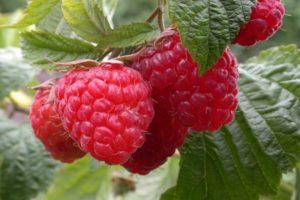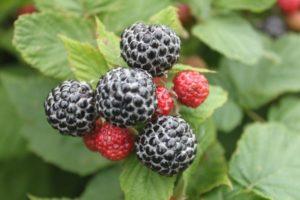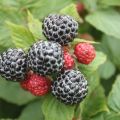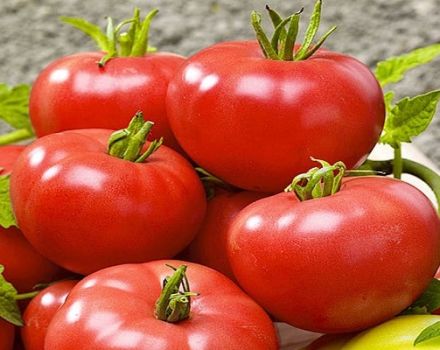The best varieties of large, sweet and remontant raspberries for Siberia with a description
Special care is not required for raspberries, since the berry culture is resistant to cold weather and temperature extremes. The simplicity of cultivation has become the reason for the widespread distribution of raspberries in Siberia. Among the wide variety of species, you can choose the best raspberry varieties for Siberia with large sweet fruits.
Content
- 1 What to consider when choosing a variety for the eastern regions
- 2 The best raspberry varieties for Siberia and the Urals: winter-hardy species
- 3 Ripening varieties
- 4 Raspberry growing technology in Siberia and the Urals
- 5 Crop care rules
- 6 When to transplant raspberries in Siberia
- 7 When raspberries ripen in Siberia
What to consider when choosing a variety for the eastern regions
When deciding which variety to plant in the eastern regions, it is necessary to take into account a number of parameters. The climatic and weather features in a particular area, the type of soil and other external factors are important. You should also familiarize yourself with the characteristics of several varieties in order to plant a variety that will satisfy the requirements for taste, size and number of fruits.
The best raspberry varieties for Siberia and the Urals: winter-hardy species
Long-term planting of various types of berries by experienced gardeners made it possible to determine the best varieties of large-fruited raspberries for Siberia and the Urals. When choosing a suitable variety, it is recommended to study the rating of popular types of berry crops.
Early sweet
A sweet variety bred by domestic breeders with bushes 2-2.5 m high. The plants are semi-sprawling, with a small number of stepchildren. The berries are juicy and have a pronounced aroma. Among the main advantages of the variety are: resistance to frost, high productivity, undemanding care.
Siberian Ogonyok
The variety with medium spreading bushes brings large berries weighing up to 5.5 g. Fruits are hemispherical, resistant to temperature drop and disease. The variety has an average ripening period.
Reward
A high-yielding mid-early variety forms low plants of a semi-sprawling type. The growing shoots are up to 2 m long and covered with a waxy coating. Fruits are medium in size, pale red, oval in shape. Raspberry Reward is weakly resistant to anthracnose and didimella and therefore requires regular preventive treatments.
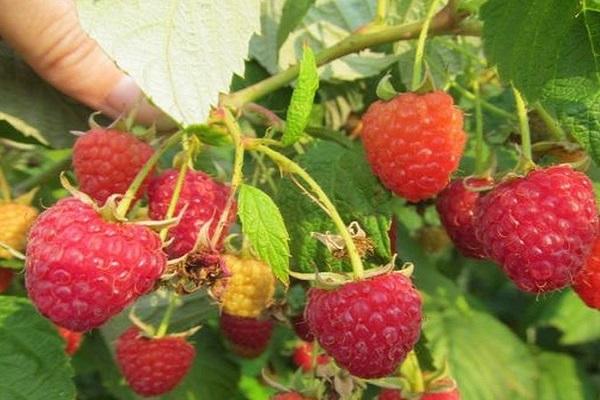
Gift of Siberia
A variety of dessert purposes is one of the large varieties of raspberries for Siberia. A characteristic feature is the black shade of the berries, therefore, the fruits look like blackberries. The variety is fruitful and brings up to 4.5 kg from each bush. Due to prolonged fruiting, the harvest is carried out in several approaches.
Vera
Vera has acquired good characteristics due to the genetic specificity of the parent plants. Plants are semi-spreading, about 1.5 m high, with medium-sized shoots and dense foliage. The berries have a mass of 1.8-2.7 g, a sour-sweet taste and rich pulp.
Barnaul
Barnaul raspberry remontant type forms slightly spreading, upright bushes. The variety is distinguished by its ability to grow plentiful shoots. The berries are not very large, egg-shaped, sweet and sour, with a delicate aroma. The weight of one fruit varies between 1.8-2 g.

Shiny
A frost-resistant and undemanding variety of universal use. The plants are medium-sized and reach a height of 1.5 m. The berries are large in size, their weight is 2.5-5.5 g. The pulp is dense, deep red in color. This variety is actively grown not only in Siberia, but also in a number of other regions.
Monomakh's hat
Raspberry Monomakh's cap grows on compact shrubs that form powerful shoots. The growing new stepchildren lean slightly downward and reach a length of 1.5 m. The variety bears fruit well and brings 4-5 kg of yield from one bush. The fruits have a sweet taste with a slight sourness.
Indian summer
The undersized and large-fruited variety Indian Leto has a slight spreading, upright shoots and non-thickened foliage. The berries are medium-sized, weighing from 2 to 3.5 g, cone-shaped, red. The taste is sour, the pulp is tender, the aroma is practically absent.
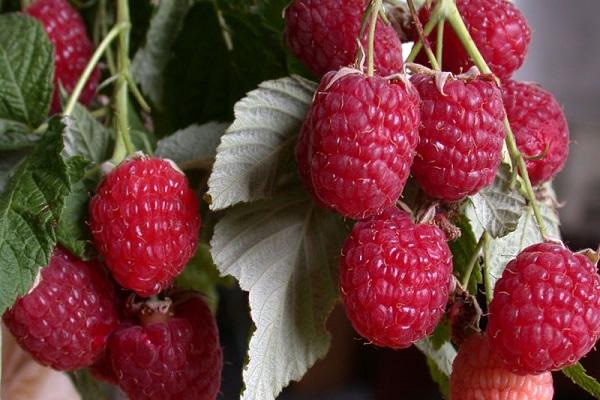
Unattainable
A repaired variety maturing in early August. Collecting raspberries Inaccessible is carried out before the first cold snap. The main advantages are the perfectly even shape and large size of the fruit. Berries almost completely dot the bushes.
Bryansk miracle
Raspberry Bryanskoe miracle ripens unevenly, so the harvest is carried out several times per season. Each bush brings up to 4 kg of berries. The variety is winter-hardy, but with a strong decrease in temperature, the abundance of fruiting may deteriorate. Due to their high taste characteristics, the berries are suitable for universal use, including fresh consumption, processing and storage.
Chief
A mid-season variety with a high frost resistance and a large yield (3.5-4.5 kg per bush). Fruits are round in shape, with a bright aroma and sweet and sour aftertaste. The shrubs are not tall, grow upright and do not lie in the beds.
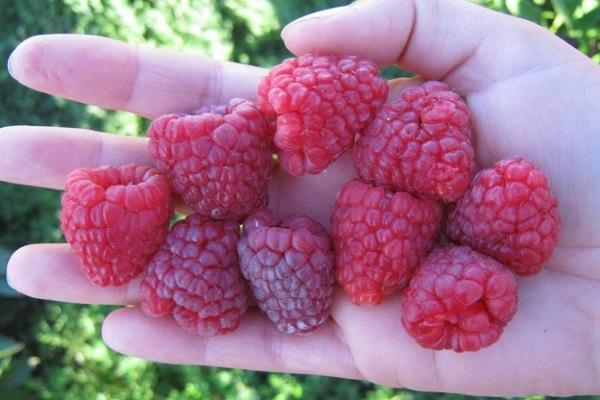
Evening dawn
An early variety forms slightly spreading plants with upright shoots. Long-term fruiting, which usually begins in early August, is characteristic of the Zarya evening raspberry. Ripe fruits acquire a conical shape, a raspberry-colored skin and a mass of up to 4.2 g.
Apricot
The bushes of the Apricot variety are miniature and slightly spreading, the shoots are strong and upright. The fruits have an unusual yellow color, a blunt-conical shape and a weight of no more than 3 g. The pulp of ripe berries is tender, with a slight aroma and sweet-sour aftertaste.
Eurasia
One of the most common varieties that produces large berries in large numbers early on. Conical fruits weigh about 4.5 g and are distinguished by a maroon matte surface. The density of the pulp of the berries is average, the taste is sweet and sour with a light aroma.
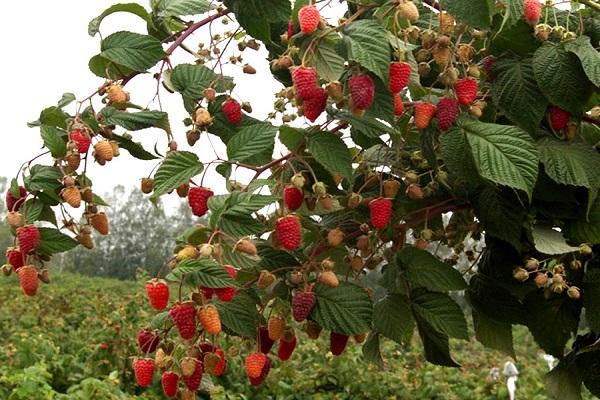
Hercules
Raspberry Hercules forms sprawling bushes up to 2 m high. The fruiting area occupies more than half of the plant height. The mass of one fruit reaches 6 g.Provided proper care and favorable climatic conditions, about 3 kg of yield grows on one shrub.
Ripening varieties
Depending on the ripening period of the crop, it is necessary to decide when it is better to plant raspberries in Siberia - in spring or autumn. The ripening period for raspberries varies between 40-70 days. The exact time is influenced by the cultivated variety, climate features, weather conditions, soil type and agricultural technology.
Early varieties
Varieties of raspberries with early ripening are allowed to be planted in late spring. As a rule, early varieties begin to harvest in late June - early July. It is recommended to grow this category of raspberries in areas with cooler climates in order to have time to harvest the entire crop before the onset of the rainy season.
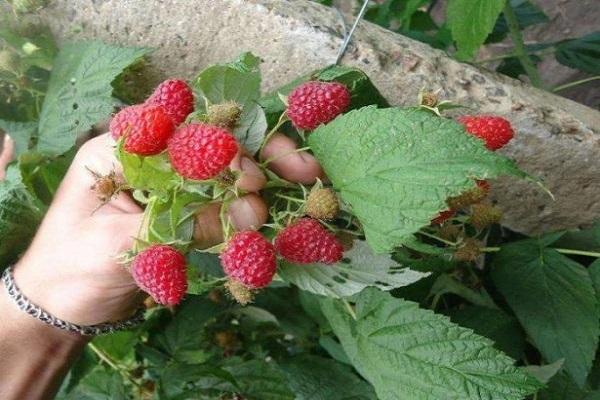
Medium ripening
Mid-season varieties are the most suitable option for planting in summer cottages. Raspberries with medium ripening periods bring harvest in early July. Common types of mid-season raspberries include: Zeus, Senator, Tarusa, Runaway.
Late-ripening varieties
Late types of raspberries begin to ripen in the second half of July - early August. The bulk of the crop is concentrated on shoots that grow and bear fruit in one season. With the onset of autumn, they are cut off, so no harmful insects and viruses remain on the plants.
Large-fruited raspberry varieties
When choosing varieties of large-fruited raspberries for the Urals and Siberia, it is worth giving preference to varieties that are popular among experienced gardeners. These include: Aboriginal, Mirage, Novosibirsk, Taganka and Maroseyka. The yield indicator from each specimen of large-fruited raspberry varieties reaches 4 kg. The mass of one berry is from 4 to 12 g. Large-fruited raspberries are recommended to be planted in autumn. As a rule, grown shrubs have been producing crops for more than 10 years.

The disadvantage of large-fruited berries is considered to be insufficient frost resistance. For this reason, many gardeners are faced with freezing of shoots. In order not to lose the ability to bear fruit, the bushes will need to be bent to the ground or used for the winter covering material.
Yellow raspberry
Yellow raspberries are less often grown in Siberia than red ones, despite the fact that the process of planting and further care is no different. At the same time, the taste characteristics of yellow berries are higher, according to a large number of consumers. Sweet yellow raspberries for Siberia have the following advantages:
- Decorative properties. Shrubs of yellow color are suitable for use in landscaping due to their unusual appearance. In addition, the bushes do not grow much and are easy to form.
- Dietary value. Yellow raspberries contain fewer anthocyanins, and sugars and acids combine better than red varieties.
- Long fruiting. The fruits ripen at different times, which allows for a long time to harvest for fresh consumption.
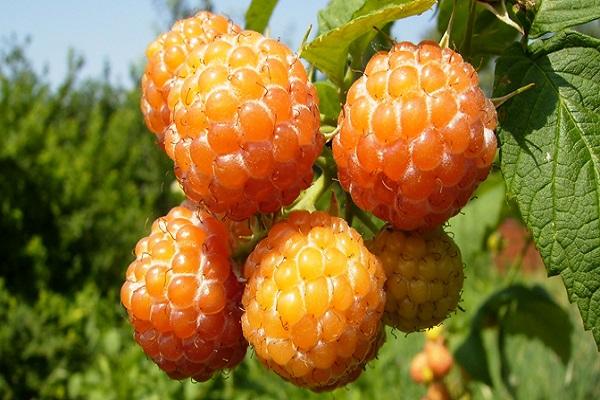
Black raspberry
Black raspberries, often referred to as blackberries, are perennials. An unusual type of raspberry spread from North America. Experienced gardeners often cultivate black berries, as they are much sweeter than usual and have a honey flavor without sourness. The composition of black berries contains ellagic acid, therefore, the use of berries serves as a means of preventing cancer.
In Siberia, the planting of black berries is only gaining momentum. The following varieties have already gained popularity among gardeners:
- Litach. The variety was developed over 10 years ago in Poland. Vigorous bushes have strong curved shoots and large thorns. Fruits are small, spherical, with a slight pale bloom.
- Coal.An early maturing variety with medium-sized bushes. The harvest is high, the berries are small, with juicy pulp.
- Bristol. Bristol Black Raspberry has a round shape and a sweet taste. The variety does not form root layers and prefers well-lit areas with slightly acidic soil.
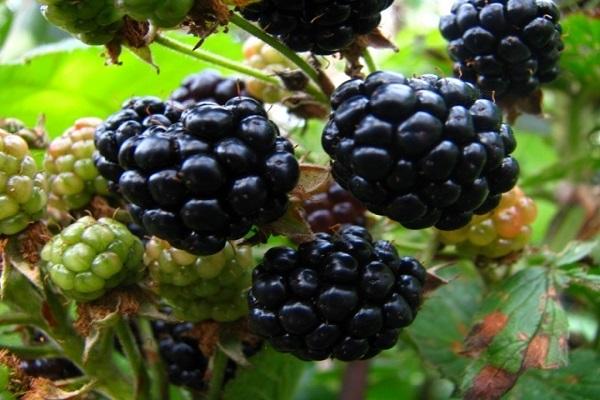
Sweet varieties
The sweetness of the berries is influenced by the level of sugar and ascorbic acid. The more they are present in the composition of the fruit, the sweeter and more aromatic they become by the time of ripening. When choosing sweet varieties of large-fruited raspberries for the Urals and Siberia, you should pay attention to the following:
- Tree-like. Large and juicy fruits weigh up to 17 g and are designed for universal use.
Sun. A sweet and undemanding variety that brings about 6-7 kg of yield per plant.
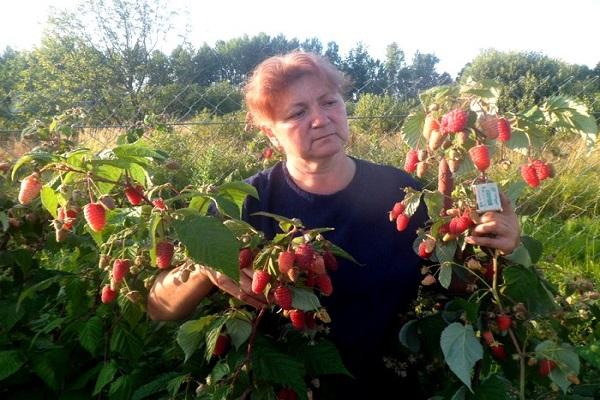
Harvest varieties
Berry yield is one of the key criteria when choosing a suitable variety. The number of ripening berries depends on the genetic predisposition of the variety, climatic conditions, and the presence of certain nutrient components in the soil.
Raspberry Gusar is considered a popular variety with a high yield rate, which is the result of the developments of Russian breeders. The main advantages include the following characteristics:
- the pulp is dense, so the berries can be transported over long distances without losing their presentation;
- bushes can be grown in the southern and northern regions of Siberia;
- in the process of growing, it is enough to adhere to the standard rules of agricultural technology;
- a ripe crop is highly resistant to decay.
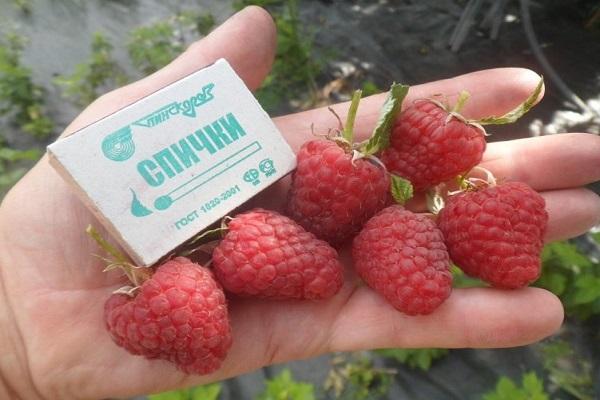
New varieties
Russian and foreign breeders are constantly engaged in breeding new varieties of raspberries in order to get unusual variations when crossing the most delicious species. Among the latest breeding discoveries, raspberries Himbo-Top, Joan Jay, Zyugana and Polka have become widespread.
Raspberry growing technology in Siberia and the Urals
When growing berries in the Siberian and Ural regions, a certain technology must be observed. It is important to select frost-resistant options that have the ability to continuously bear fruit and, immediately after the return of the crop, re-form inflorescences.
Raspberries for Siberia and the Urals must have a high yield rate and be adapted to negative external influences, including sudden changes in temperature and severe cold. The amount and taste of ripening berries directly depend on the environmental conditions during the growing season. Frequent showers and low temperatures slow down the development of shoots and lead to freezing of branches.

Dates and technology of disembarkation
The optimal dates for planting raspberries in Siberia in autumn fall on the first days of September. If it is not possible to plant the bushes in early autumn, it is allowed to carry out no later than 2-3 weeks before the onset of the first frost. This is necessary so that the plantings have time to adapt to new conditions and firmly rooted in the ground. In case of non-observance of the recommended planting dates, the roots are affected by diseases.
In the southern regions of the Urals and Siberia, it is also allowed to carry out planting work in early spring, when the probability of return frosts disappears. In this case, it will be necessary to monitor so that the soil does not dry out, and after planting, moisten each planting with 1 liter of water.
When planting plants, fertilizers are applied to the soil for active development and growth of roots. Wood ash, rotted compost or manure are suitable as primary feeding. For subsequent fertilization, it is better to use nitrogenous fertilizing and superphosphate.
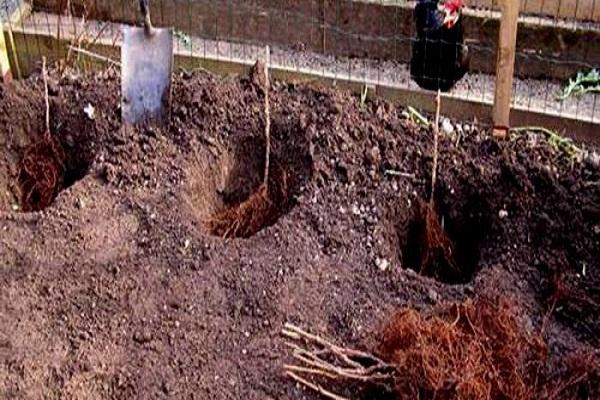
Crop care rules
In the process of growing raspberries, it is enough to follow the basic rules of care, since this culture is one of the unpretentious ones. Watering green spaces is performed as the earth dries up. Particular attention should be paid to moistening the soil during the active formation of inflorescences, ovaries and ripening of the crop. It must be borne in mind that excessive moisture can provoke worminess.
The formation of raspberry bushes is carried out using a simplified technology, unlike most other crops. Shoots of remontant varieties, which are suitable for Siberia and the Urals, do not require fixation on supports and do not sink to the ground. At the beginning of the autumn period, it is enough to cut the shoots and remove them from the site in order to prevent the development of infections and the wintering of harmful insects on the stems.
During the entire growing season, it is necessary to inspect the plantings and remove old and damaged branches that absorb nutrients.
Several times during the season, the crop must be sprayed with protective agents to prevent the development of infections and the appearance of harmful insects. For prophylactic purposes, you can use fungicides, insecticides and products of natural origin.
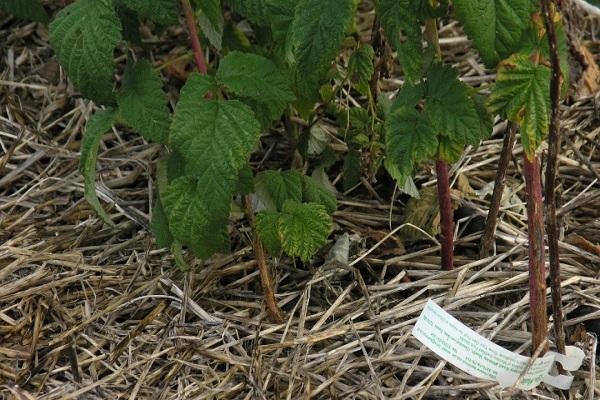
When to transplant raspberries in Siberia
The process of transplanting raspberries involves cutting off strong shoots and rooting in a new place. The transplant is carried out in order to increase the number of fruiting plants. The recommended timing for transplanting in Siberia is the beginning of autumn. It is necessary to transplant young shoots to a constantly illuminated area, where there are no through winds.
When raspberries ripen in Siberia
The exact timing of ripening of berries depends on the characteristics of the cultivated variety. As a rule, the harvest begins to ripen in early to mid-July. The fruiting period varies from a few weeks to a couple of months.
